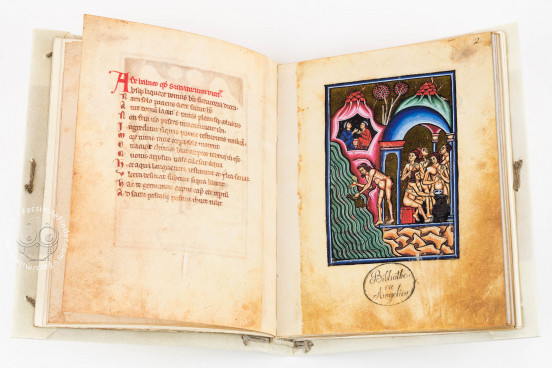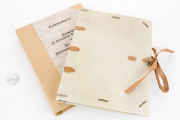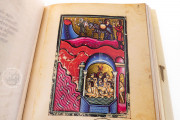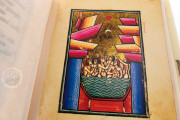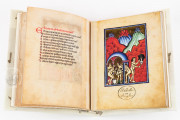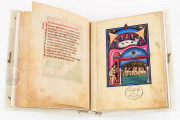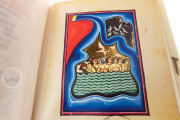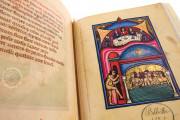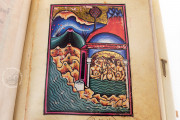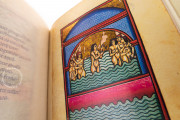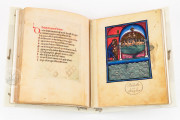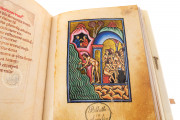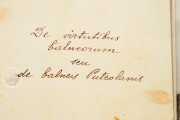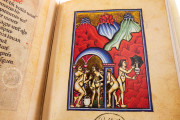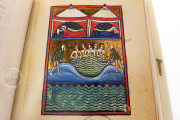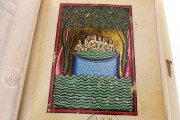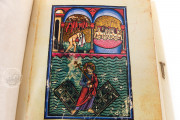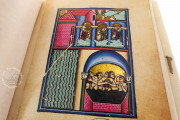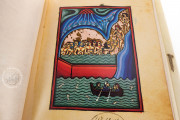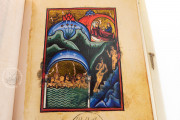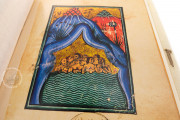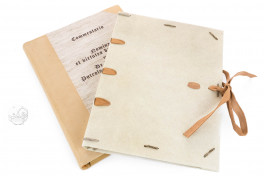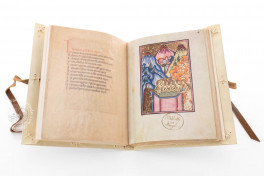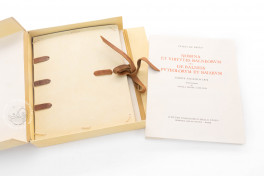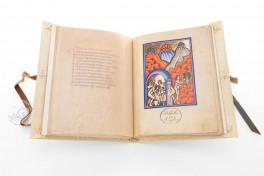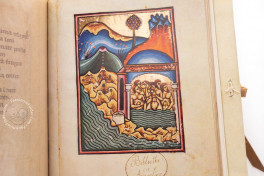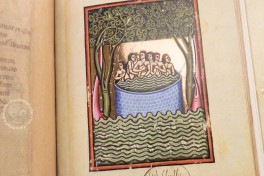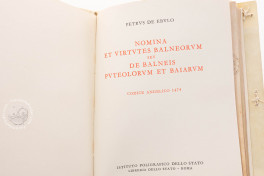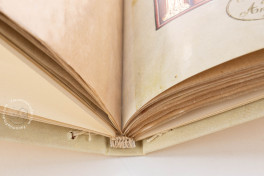The Baths of Pozzuoli manuscript in the Biblioteca Angelica is the earliest surviving witness to Peter of Eboli's Latin hexameter poem describing the therapeutic virtues of ancient Roman baths near Naples. The focus is on what ailments can be cured by taking their waters. Although an incomplete survival, the Angelica manuscript is extremely handsome and boasts eighteen full-page miniatures. It was made in southern Italy, probably Naples, in the third quarter of the thirteenth century for Manfred, King of Naples and Sicily.
Peter composed the text just a generation earlier than the Angelica manuscript and dedicated it to Manfred's father, Frederick II (1194-1250), Holy Roman Emperor. It comprises thirty-five twelve-line poems on the ancient baths in the volcanic region of the Phlegraean Fields on the Gulf of Pozzuoli west of Naples.
Masterful Miniatures
The miniatures are in a style that betrays the influences of contemporary French art and earlier Byzantine art. The painting is characterized by bold coloration, with the curing waters rendered as parallel wavy lines of blue-green, white, and black. The contours of the bodies of the naked bathers are strongly delineated. A remarkable technical feature is the use of both burnished gold leaf (for backgrounds) and shell gold (paint applied with a brush).
Detailed Reflections of the Poem
Many of the miniatures feature secondary scenes inspired by the text. For example, the birds pictured in the image of the Balneum Palumbara are nesting doves mentioned in the poem (fol. 14r). The text reports that the Balneum Calatura cures stomach ailments and "here many meals are cooked and eaten." In the miniature, three bathers—having been restored to health—are served a meal (fol. 7r).
"Pine Cone" Mountains
The settings for the bathing scenes range from tubs to grand classical architecture and fantastic landscapes. The landscapes often feature multicolored mountains with pine-cone-shaped tops that suggest the volcanic activity that created the springs and craters that led to the development of the ancient bathing resorts (fols. 2r, 4r, 5r, 15r, 18r, and 19r).
Made for Manfred
The manuscript was created for Manfred (d. 1266), King of Naples and Sicily. It may have been copied directly from the original presentation manuscript made for his father. Manfred and his courtiers could have seen themselves in the manuscript's miniatures, for the bathing resorts of the Phlegraean Fields were as popular in the Middle Ages as they had been in Roman antiquity.
A Scribe with an Unusual Nickname
On fol. 19v, the manuscript's scribe signed his work Johensis, presumably a nickname that suggests he was known for his hometown of Joha—probably Gioia del Colle. He also signed two Bibles, both copied for Manfred (Vatican City, Biblioteca Apostolica Vaticana, MS Vat. lat. 36 and Paris, Bibliothèque nationale de France, MS lat. 40).
Johensis wrote in a rounded Gothic Textualis script, not quite regular enough to be called "rotunda." Each poem occupies a page. A heading written in red occupies the first one or two lines, and the twelve lines of description follow, with the first letter of each verse set into the left margin and touched with red.
Scrambled Text
The present manuscript includes Peter of Eboli's dedication of the text to Emperor Frederick and seventeen of the original thirty-five descriptions of individual baths. Twelve of the surviving miniatures illustrate the extant text; six are representations of baths whose descriptions have not survived. The current confection of shuffled content is arranged, as the original complete manuscript was, with the miniatures exclusively on rectos and text on versos.
One Mario Guidarelli owned the manuscript in the eighteenth century. It entered the Biblioteca Angelica no later than 1854. The present binding of parchment over pasteboard with a leather strap dates from the nineteenth century.
We have 2 facsimiles of the manuscript "Angelica Baths of Pozzuoli":
- De Balneis Puteolanis facsimile edition published by Istituto Poligrafico e Zecca dello Stato, 2000
- Nomina et virtutes balneorum seu De balneis Puteolorum et Baiarum: Codice angelico 1474 facsimile edition published by Istituto Poligrafico e Zecca dello Stato, 1962

